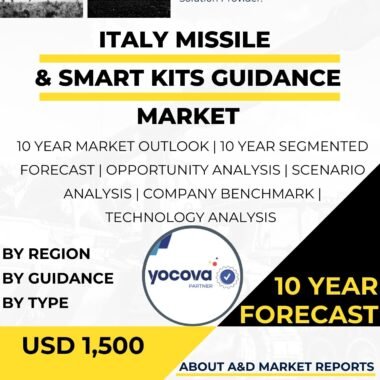Description
Loitering munitions, also known as kamikaze drones or suicide drones, have emerged as a cutting-edge and transformative capability in the U.S. military’s arsenal. These unmanned aerial systems (UAS) offer a unique combination of intelligence, surveillance, reconnaissance, and precision strike capabilities, making them highly versatile and effective tools for modern warfare.
Loitering munitions represent a paradigm shift in the way the U.S. military conducts operations. Unlike traditional munitions that are launched at pre-determined targets, loitering munitions have the ability to linger or “loiter” over the battlefield, providing real-time situational awareness and the flexibility to engage time-sensitive targets. This capability is especially valuable in dynamic and rapidly evolving environments.
The concept of loitering munitions dates back to the early 2000s when the U.S. military and defense industry recognized the potential of using UAS as a means of targeting and engaging enemy forces with increased precision and reduced collateral damage. These systems were envisioned to complement existing surveillance and reconnaissance assets, such as unmanned aerial vehicles (UAVs), and offer the ability to directly engage enemy targets.
Loitering munitions are designed to be compact, lightweight, and easily deployable. They can be launched from a variety of platforms, including ground-based systems, vehicles, ships, and aircraft. Their small size and portability allow for rapid deployment and integration into various military operations.
One of the key advantages of loitering munitions is their ability to be controlled remotely by an operator, who can direct the UAS to loiter over a specific area, identify potential targets, and decide when to engage. This level of control enables precise and discriminate targeting, minimizing the risk of collateral damage and civilian casualties.
Additionally, loitering munitions are equipped with advanced sensors and cameras that provide high-definition video and imagery in real-time. This intelligence allows operators to assess the battlefield situation and identify high-value targets accurately. Loitering munitions can also transmit their video feed to ground stations or other assets, enabling a broader situational understanding for commanders and other forces.
Furthermore, the loitering capability of these munitions is highly advantageous in situations where targets may be transient or constantly moving. Traditional munitions often rely on precise timing and positioning to hit a specific target, which can be challenging when the enemy is on the move. Loitering munitions can patiently wait for the right moment to strike, increasing the likelihood of successful engagements.
The precision strike capability of loitering munitions enhances the U.S. military’s ability to conduct intelligence-driven, targeted operations. These UAS can engage a wide range of targets, including enemy personnel, vehicles, command posts, and other high-value assets. Moreover, the ability to engage targets at a moment’s notice significantly enhances the agility and responsiveness of U.S. forces on the battlefield.
As the U.S. military continues to develop and refine its loitering munitions capabilities, there are various considerations to address. One significant concern is the potential for adversaries to detect and disrupt these systems. As loitering munitions become more prevalent, adversaries may develop countermeasures to jam their communication links or deploy electronic warfare systems to neutralize them.
To mitigate these risks, the U.S. military invests in research and development to enhance the autonomy and resilience of loitering munitions. Increasing the UAS’s ability to operate in denied or contested environments ensures that they can maintain their effectiveness even in the face of enemy countermeasures.
The ethical use of loitering munitions is also a critical consideration for the U.S. military. While these systems offer enhanced precision and reduced collateral damage potential, there is a responsibility to employ them in accordance with international humanitarian law and adhere to strict rules of engagement. The U.S. military places great emphasis on training operators and ensuring that loitering munitions are used responsibly and lawfully.
As the U.S. military further integrates loitering munitions into its operations, the potential for collaboration and synergy with other assets becomes increasingly apparent. Loitering munitions can complement and enhance the capabilities of existing UAVs, ground-based sensors, and other intelligence assets. These systems can work in concert to provide a comprehensive and layered approach to intelligence, surveillance, reconnaissance, and precision strike operations.
Looking to the future, the continued development and deployment of loitering munitions represent a transformative and disruptive capability for the U.S. military. These systems provide a dynamic, responsive, and highly effective tool for intelligence-driven, targeted operations. Their ability to loiter, identify, and engage targets with precision empowers U.S. forces with increased agility and lethality on the modern battlefield.
As technology advances and new threats emerge, the U.S. military will continue to refine and adapt its loitering munitions capabilities to maintain its technological edge and strategic advantage. Emphasizing responsible use, interoperability with other assets, and continuous innovation, the U.S. military harnesses the potential of loitering munitions to safeguard national security and protect American interests worldwide.




